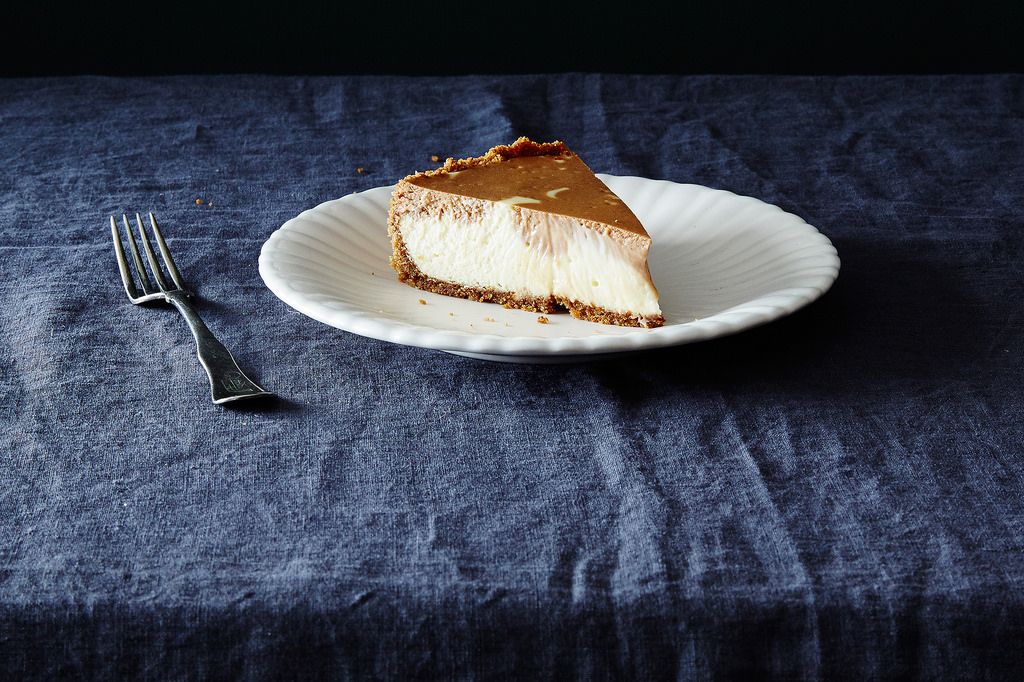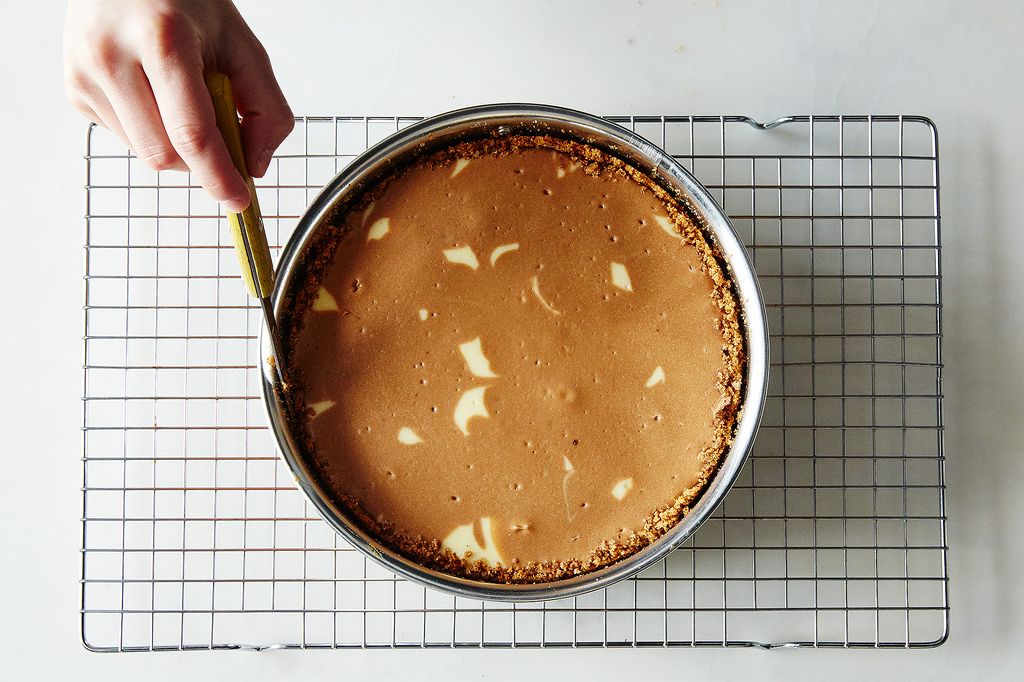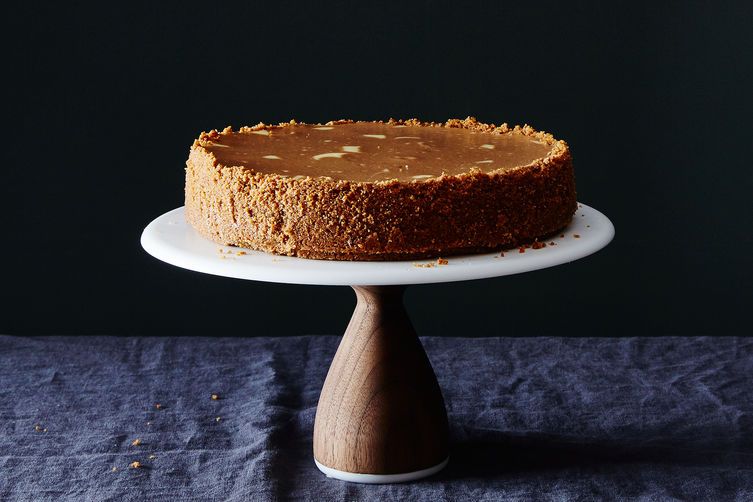Popular on Food52
13 Comments
judy
April 10, 2021
My trick for nary a crack in my cheesecake? I like my cheese cake cooked a bit longer than suggested in the recipe. And it does then crack when I do so. I found that if I add about 1 slightly rounded tsp of AP flour for each brick of cheesecake, NO CRACK! But I have often wondered whey everyone is so worried about that crack? Generally we put fruit topping on the cake anyway, so it doesn't show. But, as I am not a professional baker, I am nt as concerned about the show as the flavor, texture and eagerness of my crowd to eat whatever I put before them, knowing it almost always tastes good, even if it is not perfectly presented.....Happy cooking, less stress folks!
irishchef
December 16, 2015
Nancy internal temp is 150 degrees and it's done. All bacteria is killed too.
Anonymous
December 16, 2015
What about taking an internal temperature reading? What temperature would that be, if anyone can help with that? Also, that is one reason why I love sour cream topped cheesecakes - covers the cracks! Or other toppings such as a fruit topping. And if it cracks, know what? Its still a delicious cheesecake!
Cary S.
May 4, 2015
I make my cheesecake batter in a food processor using the metal blade. Since a food processor doesn't add air to the mix, it's additional insurance along with using a water bath. I also use a food processor to whip heavy cream, no air, no worries of weeping or deflating.
irishchef
May 3, 2015
I've had the best results by baking cheese cake till center is jiggly and then turning oven off and opening oven door till it stays open (like when broiling). Leave like this till cake is cool. Works everytime.
andrew E.
May 3, 2015
Here are the 3 things that have always worked for me :
All ingredients at room temp.
Mix all ingredients on speed 1
300* , water bath , cool in water bath with the Oven turned off
All ingredients at room temp.
Mix all ingredients on speed 1
300* , water bath , cool in water bath with the Oven turned off
Lauri W.
May 3, 2015
I always bake my cheesecakes in a water bath and then only halfway. I put my springform pan into a slightly larger cake pan, then inside a much larger cake pan and fill the outer pan with enough water to come 1/2-3/4 up the side of the inner cake pan. After baking halfway through the allotted recipe time, I turn off the oven and leave the cheesecake in the oven, door closed, for another hour. The hot water and the heat of the oven finishes cooking the cheesecake and not only does it not crack, it doesn't brown the top. The result is a 'restaurant quality', beautiful product.
Lynn S.
April 28, 2015
I've always rolled my eyes at cheesecake recipes that read "add the eggs, one at a time and beat until thoroughly mixed." This direction is the recipe for a cracked cheesecake. I always mix up my eggs first, then slowly add them to the cream cheese mixture as the last addition. No cracked tops!
judy
April 10, 2021
I didn't catch that direction. I have always done it this way as well. with the addition of a tsp of flour per brick of cheese.
AntoniaJames
April 27, 2015
So many useful tips, as always. Just got "Flavor Flours," by the way, and am so glad I did. ;o)





See what other Food52 readers are saying.